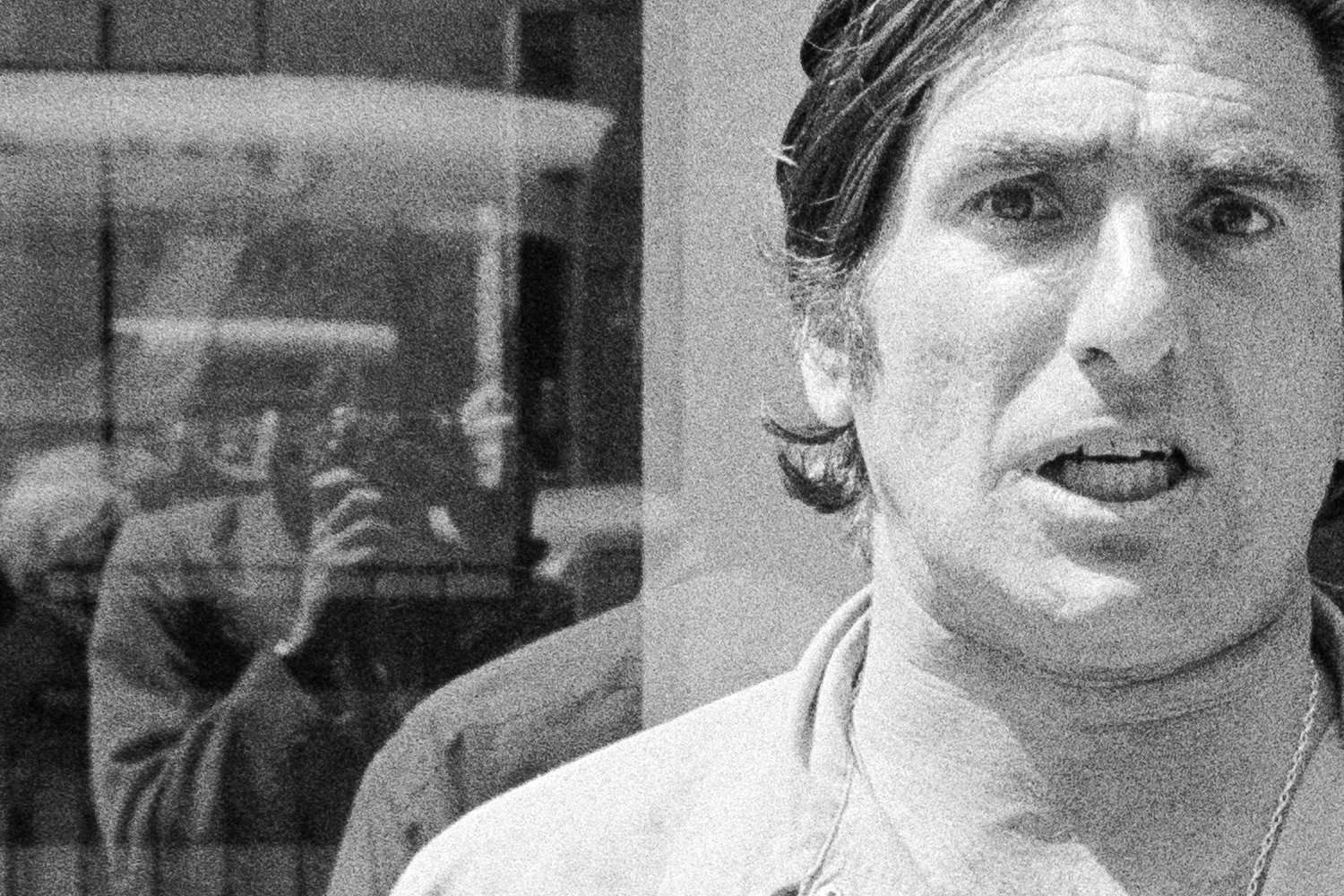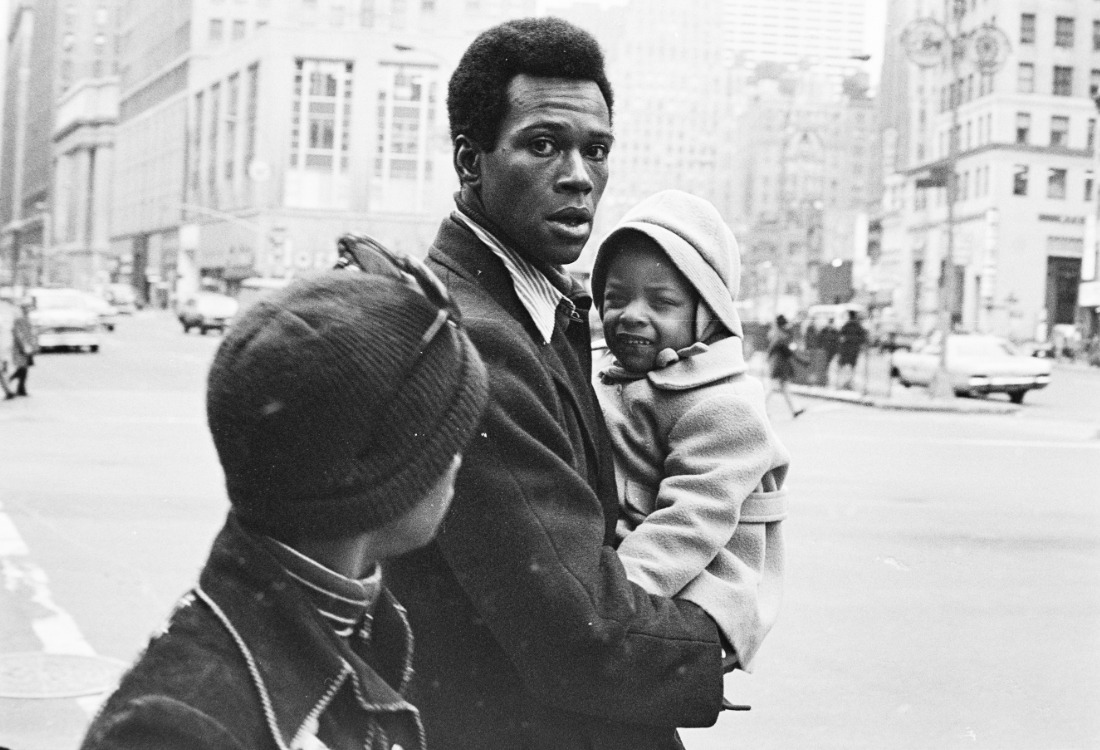Turning thousands of negatives from the 1970s into digital images has helped me regain a love for film grain. Not that I think “clean” images are a bad thing, but as I meticulously inspect each image at 100%, I really see how grain affected an image and created characteristics that you can’t get via a digital camera. Yes, there are filters that emulate Kodak Tri-X or Ilford HP-5—my two go-to emulsions—but there’s nothing like the real thing.

100% blow-up detail from one of my photos of the original “Opera Man,” street singer Larry Danzinger. (Rumor has it that Adam Sandler was inspired by this guy for one of his popular SNL characters.) That’s me lurking in the shadow to his left, taking the picture. Gotta love that Tri-X grain!
(Note: I use many of the techniques for this personal project to restore clients’ family photos!)
So, as I use Photoshop’s miraculous Healing tool to remove hairs and dust particles that wouldn’t come off no matter how much I spray the negative with Dust-Off, I’ve found myself getting lost in the grain. Kind of like looking at a Pointilist painting up close (yeah, I’ve done that) I get to see grain patterns that haven’t seen since I printed the negatives 40 years ago.
My challenge (this is slightly gross)
Being able to determine if a defect is just something that was in the original scene, as opposed to a piece of dust, hair or mildew sitting on the negative, has been a challenge but over time I’ve come to quickly recognize the difference. A few random observations:
• If a white spot on the negative doesn’t look like the grain and has a hard edge, it’s dust.
• Hair is hair—you can’t miss it.
• Circles of light areas in shadow areas or dark fabric are probably mildew. Eww. Widen the healing brush. It does the trick.
• “Spider”-shaped light areas with legs reaching out are also mildew. They are evidence that I didn’t exactly keep my negative under optimal storage conditions. At least I used glassine envelopes!

Before: A dusty image before I applied the Healing Tool.

After: Optimized and ready to print. This is from my ongoing project rediscovering and digitally optimizing my street photos from the 1970s.
The advantage of digitizing my images is that the process of removing all of these imperfections takes minutes and only need to be applied once. In the traditional darkroom, one would have to painstakingly spot prints and copy them for repeatable results, losing a generation of image quality.
Next: Larry, the street singer.